10 Frequently Asked Questions about Perfect Binding
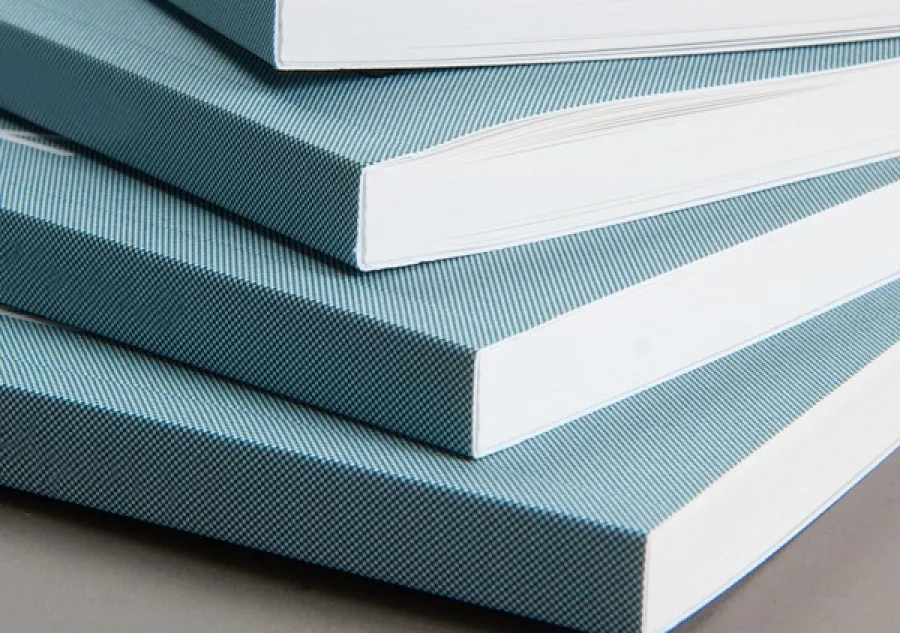
estimated reading time: 5 minutes
1. Why is it called Perfect Binding?
The perfect binding process involves gluing a stack of printed
pages within a durable wraparound cover. Once the glue cures, the books are
trimmed along the three open sides to create crisp and straight edges that look
"perfect." This precise trimming is where perfect binding gets its name.
2. What are the benefits of Perfect Binding?
Perfect bound books are durable and long-lasting, making this binding method an
ideal choice for many types of book projects. In addition, perfect bound books have a very
professional appearance. Perfect bound books also lie perfectly flat and stack well
on a table or shelf. Furthermore, the perfect binding method is suitable for short, medium, or long production runs.
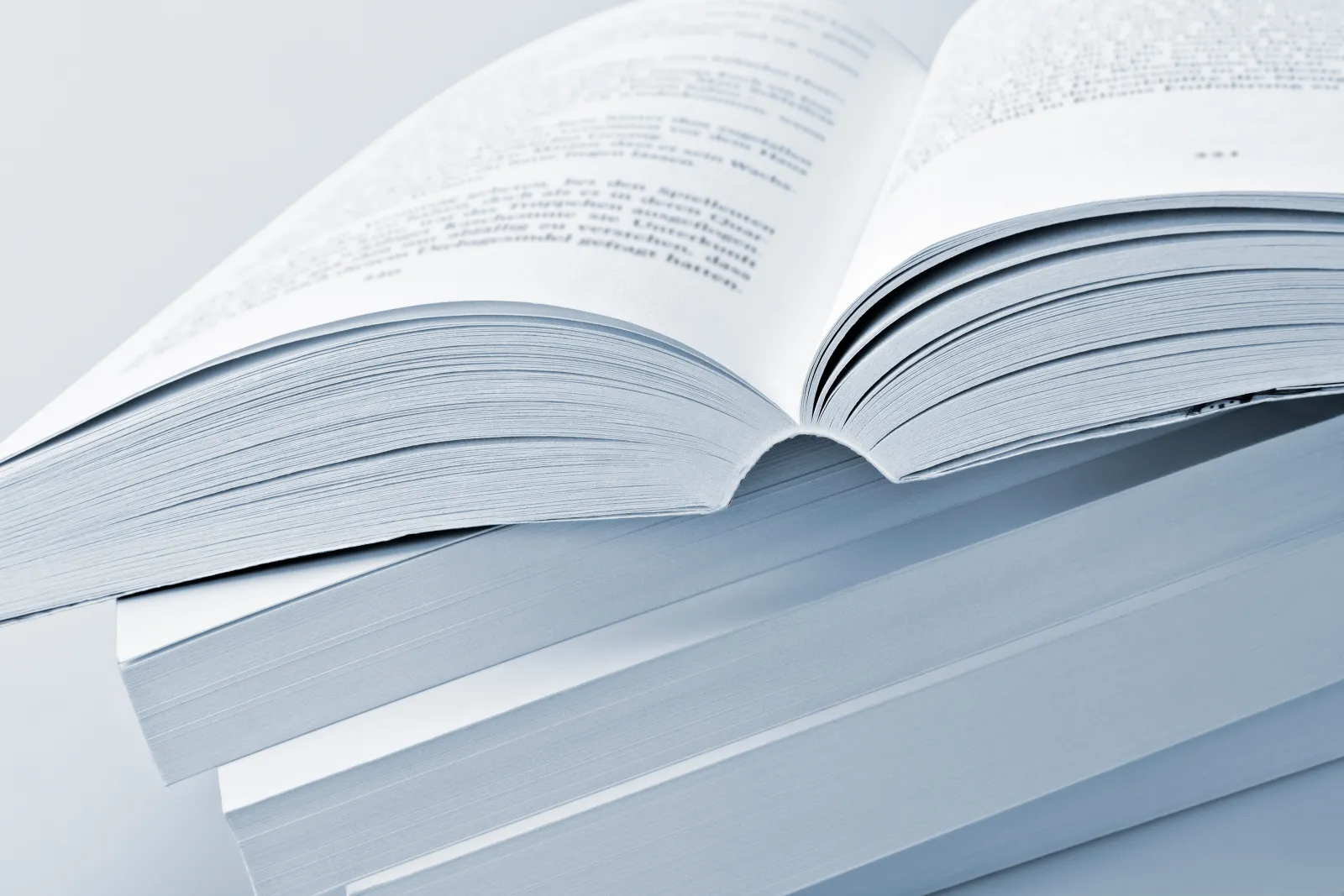
3. Will the Perfect Binding method work for every book project?
The perfect binding method works well for the majority of
book projects except those that have very low pages counts. If the page count
is too low, there will not be enough surface area for the glue to adhere to the edge
of the page stack where it meets the cover. This is crucially important because the glue used
for perfect binding needs at least .125" (1/8") of surface area to bond effectively.
4. Is Perfect Binding expensive?
Not at all. Perfect binding is extremely affordable. In
fact, one of the reasons perfect binding has such widespread popularity is
because it offers a low cost alternative to hardcover binding. Perfect binding
does cost a little more than saddle stitch binding but this is because the
perfect binding process involves more production steps. The professional
appearance and durability of perfect binding makes it a tremendous value.
5. What is the minimum page count for Perfect Binding?
The answer to this question actually varies. Perfect bound
books need a spine width of at least .125" for the adhesive to bond the
pages and cover securely. This means there is not an absolute minimum number of
pages because if the pages are made from a heavier stock, less pages will be needed
to reach the .125" threshold…and if the pages are made from a lighter stock,
more pages will be needed to reach .125".
For example, one sheet of 50# offset or 20# bond paper measures
around .004" in thickness. If we divide .125" by .004", the result is 31 sheets.
Since each sheet has two sides and each side of the sheet counts as one page,
this means we'll need at least 62 pages in a book made with 50# offset or 20# bond in order to
use the perfect binding method. If the book has less than 62 pages, a thicker
paper stock should be used to reach the minimum .125" thickness or a different
binding style (such as saddle stitch or spiral coil) should be considered.
Using a similar example with a heavier stock, one sheet of 80# offset or 32# bond
paper measures about .006" in thickness. If we divide .125" by .006", the
result is 21 sheets…which translates to 42 pages. So, a book made with paper sheets
measuring .006" in thickness will need to have at least 42 pages to be perfect
bound.
6. What is the maximum page count for Perfect Binding?
It depends on the production equipment being used, but most
perfect bound books can be made up to a maximum thickness of around 2 inches.
Just like in the answer to question #5 above, how many pages this actually equates to is
based on the thickness of the paper stock.
Using the same paper types in the answer to question #5, we know 50# offset paper and 20# bond paper both have a thickness
of .004". Dividing 2" by .004" equals 500 sheets. Because each side of a sheet
counts as one page, this translates to a maximum of 1,000 pages for a perfect bound book made with 50# offset
or 20# bond.
Similarly, 80# offset paper and 32# bond paper both have a thickness
of .006". Dividing 2" by .006" equals 333 sheets. This translates to a maximum
of 666 pages for 80# offset or 32# bond.
As you can see, the maximum page count varies depending on
the thickness (caliper) of the paper stock being used for the book. By the way,
if the overall thickness of a book's pages happens to greatly exceed 2", a
common solution is to divide the book into two or more volumes so each can be bound individually.
7. Can Perfect Bound books have text printed on the spine?
A major advantage perfect binding has over other softcover binding methods is that this method produces a flat spine. This allows for text to be printed on the spine, such as
the title of the book, name of the author, volume number, or similar
identifiers. That said, it is important to keep in mind that perfect bound books usually need
a spine width of at least .25" (1/4") to be printed with text that is large
enough to be read clearly.
8. What type of glue is used for Perfect Binding?
In the book printing industry, there are currently two primary types of adhesive being used for perfect
binding - Ethylene Vinyl Acetate (EVA) and Polyurethane Reactive (PUR). EVA
glue is considered to be the traditional binding adhesive because it has been
around longer. However, PUR glue has been growing in popularity over the past few
decades. This is because PUR is superior to EVA in almost every regard - stronger adhesion,
greater flexibility, and better performance in extreme temperatures.
Related Article: The Benefits of PUR Binding
9. What types of projects are typically Perfect Bound?
Almost any type of multi-page document can be bound with the
perfect binding method. This includes a variety of books and publications such
as manuals, catalogs, directories, handbooks, workbooks, journals, magazines,
thicker comic books, graphic novels, biographies, corporate reports, and any
other bound document that is more than 1/8" in thickness.
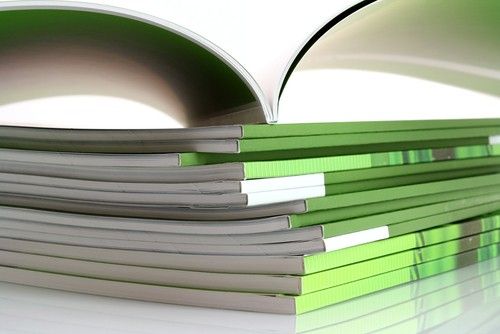
10. Does Perfect Binding go by any other names?
Perfect Binding is sometimes referred to using a generic
name like paperback binding or softcover binding. Also, because a bonding agent
is used in the construction of these books, perfect binding is occasionally
called adhesive binding or glue binding.
Color Vision specializes in Custom Printed Books
Custom Book Printing is one of Color Vision's specialties. So
whether you have a need for perfect binding or another softcover binding style,
we have the expertise and affordability you are seeking. Just give us a call at 800-543-6299 when
you're ready to discuss your project.
If you know your specs and want to receive a
quotation by email, simply fill out our Quote Request form. By the way, Color
Vision produces all perfect bound books using PUR adhesive because it has superior
adhesion and flexibility. As always, we look forward to assisting with your
next book project!
Related Articles

Printing Booklets: 5 Popular Types of Binding for Booklets
Read This Article
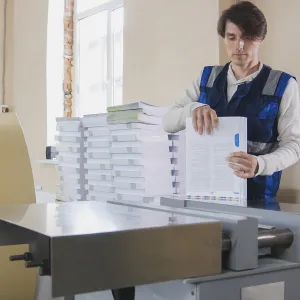
Short Run Book Printing: The Gateway to Self-Publishing
Read This Article
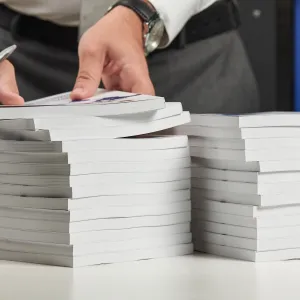
Perfect Bound Books: Exploring the Perfect Binding Process
Read This Article
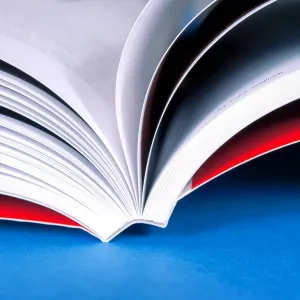
Custom Book Printing: What is PUR Binding?
Read This Article